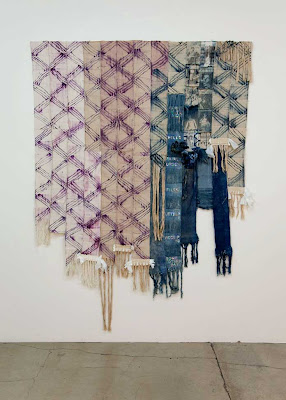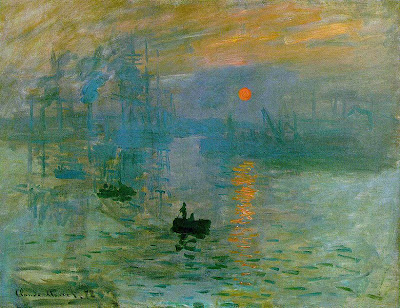>
 |
| William Warmus is introduced to the audience in the Renwick’s Grand Salon |
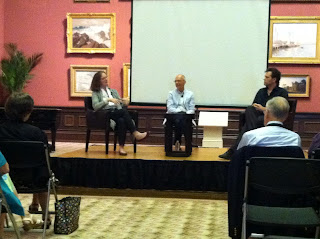 |
| L-R Toots Zynsky, William Warmus, Matthew Szösz |
 |
| Matt Szösz at the opening of 40 Under 40. Photo by Smithsonian American Art Museum
|
After the lecture at the Smithsonian, William visited the Washington Glass School and chatted with the artists in the studio.
| William Warmus takes photos of Erwin Timmers’ artwork. |
William said this about the Washington Glass School: “It’s better than I thought it’d be…it’s not as bad as it could’ve been”. High praise indeed.
It was great to be able to meet and chat and have William share his unique perspective on the art scene with us, and he has promised to return!
Sloppy Craft… but is it Art?
>Nicolas Bell, Curator of the Smithsonian’s Renwick Gallery talked about the rise of “Sloppy Craft Movement” during his talk on influences of the 40 under 40 exhibit (currently on exhibit thru Feb 3rd 2013). This concept has been talked about in the Glass School for a while, as many of the artists here come from diverse backgrounds – often from outside the glass craft world… and it is a great subject that deserves more attention in the art blogdom world.
“Sloppy Craft” – is this an oxymoron? I thought that many may not understand the concept of sloppy craft, and a cynically-minded person, could view much of the work – often designed to maximize the shock value – as a transparent bid for attention in the contemporary art world, which has long made a point of embracing my-kid-could-do-that aesthetics.
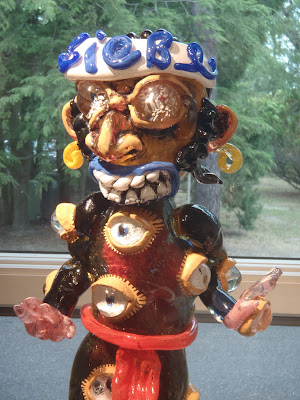 |
| Mixed Media/Glass sculpture by the De La Torre Brothers Einar and Jamex De La Torre derive their gutsy imagery from such diverse influences as Jose Posada, television, the Vatican and the darling of modern comics, the huge eyed Anime characters. |
In 2009, Glen Adamson, the Deputy Director of Research at the Victoria and Albert Museum coined the phrase “Sloppy Craft” which he defined it as “the unkempt product of a post-disciplinary craft education.”
The origins of “Post Disciplinary Craft” begin in the early 2000’s when new ways of thinking about craft began to form and many saw a need for a more relevant understanding of current craft practice and objects. The earlier models of understanding craft, which relied on either the Arts and Crafts Movement or the Back to the Land counterculture movement that had influenced studio craft in the 1960s and 1970s, would have to be replaced.
The youngsters of craft no longer felt connected to the past – or rather, are not referencing the history of the mediums – that is not their focus. They didn’t learn in apprenticeships with masters and a growing number had abandoned classrooms. They weren’t wed to techniques or materials. University art programs found that the students did not want to be categorized as “glass artists” or “clay artists” and, as the students just want the media skills as part of their repertoire, sought to merge curriculums under the term “Material Studies”. Young crafters also learned from other sources – such as their peers or the Internet. The digital age would be to craft what the sexual revolution was to feminism. This is an approach to craft that resonates with the times, linking craft to the wider concerns of today’s society (ie: think global,act local; feminism; gender politics; social justice and ecological concerns). The don’t be precious DYI movementresponse of current craft students were a couple of other aspects of “sloppy craft.” One was the recycling of materials — found or “trash” art, one might call it. It’s everywhere these days, certainly if you looked at the works at DC’s semi-annual artfest Artomatic – and no one bats an eye at the exhibits. The other aspect of this kind of casual crafting is that it appears most often in assemblages and collage. Assemblages and collage have clear ancestors, dating back to Picasso through Rauschenberg and are seen and made by thousands of people who may not even think of themselves as artists.
Traditionally, a craftsperson would spend years polishing their craft, working at the highest level until one was so good that one could let it go – forgetting technique and working from the heart intuitively; the crafter/artist would have behind them all the knowledge needed to return to “fineness” if the artwork required it.
To some extent Josh Faught fits that mold. He self-identified as a Fibers Major at the Art Institute of
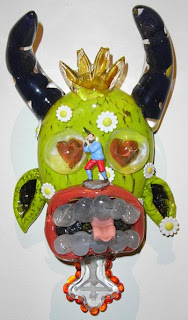 |
| Einar and Jamex de la Torre |
But making things, it turns out, is still quite difficult. Indeed, the one thing that seems to bind the majority of contemporary art together is the lack of skill required to create it. Glen Adamson also explored the popular notion of what defines “craft” and why some may think that craft always has to be finely made. He states,” On the one hand, skill commands respect. We value the integrity of the well-made object, the time and care it demands. Therefore, what we most want out of our craft is something like perfection. On the other hand, though, we value craft’s irregularity– it’s human, indeed humane, character. We want craft to stand in opposition to the slick and soulless products of systematized industrial production.” With this in mind many people would want to consider something very well made to be craft and not something considered to be sloppy craft.
What about the name of the movement – “sloppy craft”? “Sloppy” is really a sound bite kind of name, irresistible once spoken out loud. The reference was used extensively with textile and fabric art, but examples can be found in all the crafts. “Sloppy” indicates intentionality, which might not be the case with the art. “Sloppy Craft” is an unfortunate phrase — perhaps other names like “informal” “casual” or “raw” would be less jarring than “sloppy” to describe contemporary art that has some base in traditional crafts.
Artists need to examine these historical approaches and goals –whether it is humility, authenticity, expressiveness, shock value and impact – to see if they are useful in understanding and contextualizing sloppy and post-disciplinary craft. At the very least, it will help demonstrate whether contemporary craft is an evolution (of its prior forms) or a revolution.
Craft Will Save The World: Renwick Gallery’s 40 Under 40
>
|
Stephanie Liner, Momentos of a Doomed Construct (installation detail), 2012, plywood, foam, Dacron, cotton, adhesive, live model |
The Smithsonian Renwick Gallery’s Craft Futures: 40 Under 40 exhibit has just opened this week (on exhibit now thru February 3, 2013), and it is a must-see show! Nicholas Bell, the Curator of American Craft organized the exhibition which features forty artists born since 1972 – the year the Smithsonian established the Renwick Gallery. Evolving notions of craft within traditional media such as ceramics and glass, as well as in fields such as industrial design, installation art, fashion design, and mathematics are explored.
| General view of gallery space – Artwork in foreground: Marc Maiorana, Renwick Gate, 2011, iron |
Artwork in the exhibition was created since Sept. 11, 2001 and this new work reflects the changed world that exists today, one which poses new challenges and considerations for artists. Nicholas Bell talked about the work and the selection process at a noon lecture on Friday, July 20, outlining some concepts that included underlying themes that could be seen within the works – including postmodernism, environmental and economic issues, and how the explosion in craft is based on a desire by artisans to try and fix the world via the process of creation. There was also mention of a topic at Nicolas’ talk that I want to investigate more: the ‘sloppy craft movement’ (!) – but that is for a later blog posting.
Some of the standout works seen at the opening nite include:
|
Stephanie Liner, Momentos of a Doomed Construct (installation detail), 2012, plywood, foam, Dacron, cotton, adhesive, live model. |
|
Andy Paiko, Spinning Wheel, 2007, blown glass, cocobolo, steel, brass, leather |
|
Great to see Matt Szösz and his inflated fused glass. Matt was recently awarded the Louis Comfort Tiffany Foundation Grant. |
|
Korean born Bohyun Yoondescribes his work titled “Glass Tube”. |
 |
| Opening nights are about networking. Above left image in center: Chris Rifkin, Fuller Craft Museum’s board chairman and Right rear image: Perry Price, Director of Education at American Craft Council.
|
|
Cristina Córdova, Dulce, 2011, ceramic, paper |
 |
| Mia Pearlman’s paper works dominate one of the gallery spaces with massive installations and a video. |
|
Olek, Knitting is for Pussies,2005-2011, mixed media, 100% acrylic yarn, live models |
 |
| Detail from Olek’s ‘Knitting is For Pussies’ installation and of ‘yarn-bombed’ tricycle parked in front of Renwick Museum on Opening Nite. |
| The opening night gala was a spectacular event – very much with a retro art-happening vibe. |
The fun, audacity, interesting & provoking attitudes of the show make it a winner and it should be added to one’s list of gallery/museum to-do lists for Washington, DC this year. Click HERE to jump to the Smithsonian Renwick Gallery website.
Craft Futures 40 Under 40 at Smithsonian Renwick
>
 40 under 40:Craft Futures features forty artists born since 1972, the year the
40 under 40:Craft Futures features forty artists born since 1972, the year the
Opening July 20, 2012, the exhibition investigates evolving notions of craft within traditional media such as ceramics and metalwork, as well as in fields as varied as sculpture, industrial design, installation art, fashion design, sustainable manufacturing, and mathematics. The range of disciplines represented illustrates new avenues for the handmade in contemporary culture.
 |
| Matthew Szösz, b. 1974 |
All of the artworks selected for display in the exhibition were created since Sept. 11, 2001. This new work reflects the changed world that exists today, which poses new challenges and considerations for artists. These 40 artists are united by philosophies for living differently in modern society with an emphasis on sustainability, a return to valuing the hand-made and what it means to live in a state of persistent conflict and unease.
Nicholas R. Bell, The Fleur and Charles Bresler Curator of American Craft and Decorative Art at the Renwick Gallery, organized the exhibition. The museum hopes to acquire works by every artist featured in the exhibition to commemorate the fortieth anniversary of the Renwick Gallery.
 |
| Matthew Szosz Untitled (Inflatable no.46p) Matthew demo’d his technique at the Washington Glass School – click HERE to jump to description and video. |
Click HERE to jump to the list of the youngsters in the show.
 40 under 40: Craft Futures July 20, 2012 – February 3, 2013
40 under 40: Craft Futures July 20, 2012 – February 3, 2013
1st floor, Renwick Gallery (Pennsylvania Avenue at 17th Street N.W.) Washington, DC
